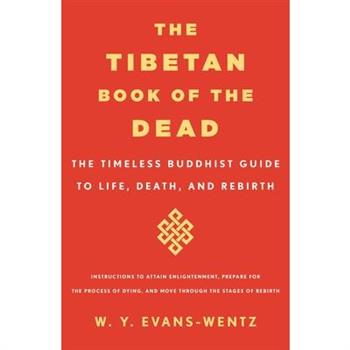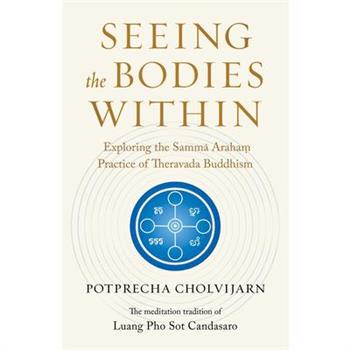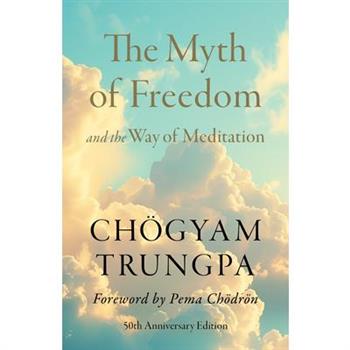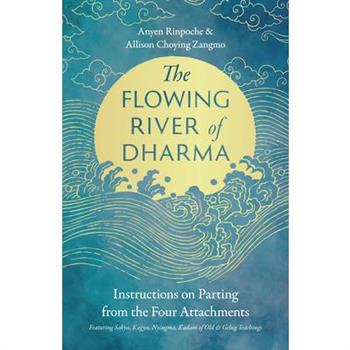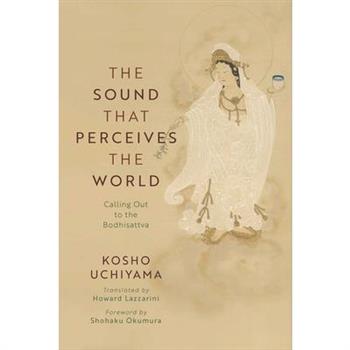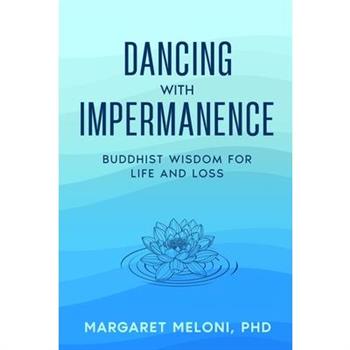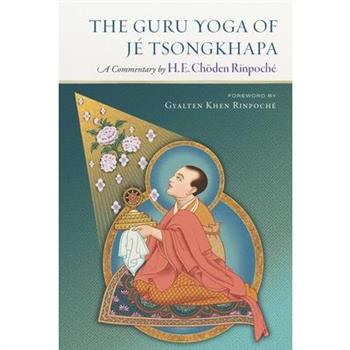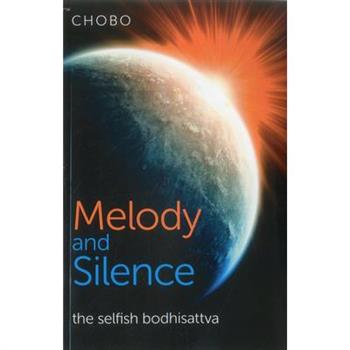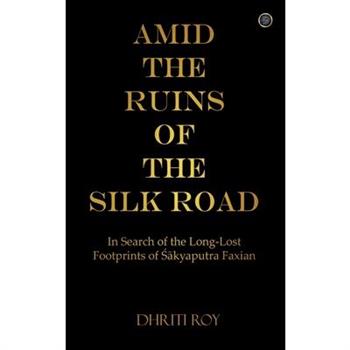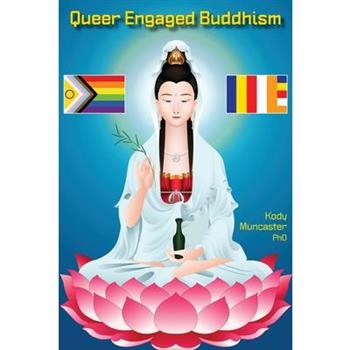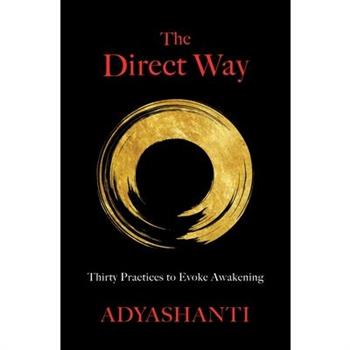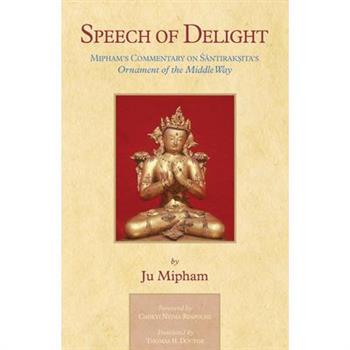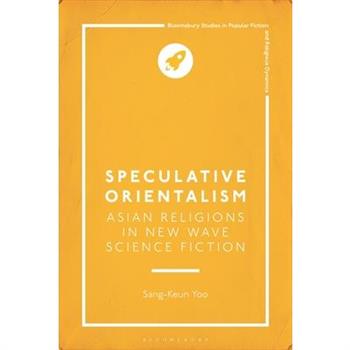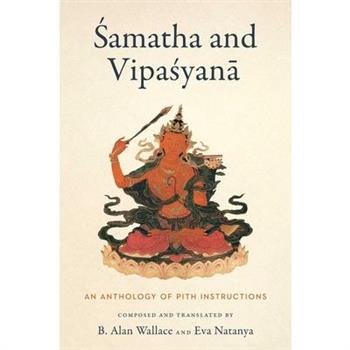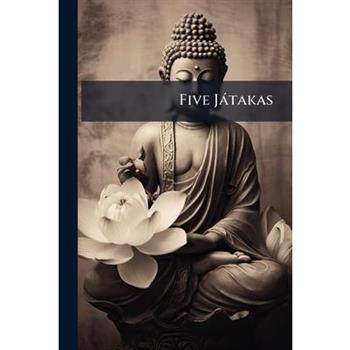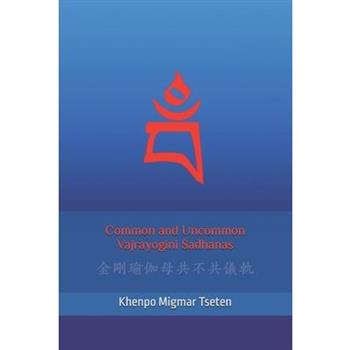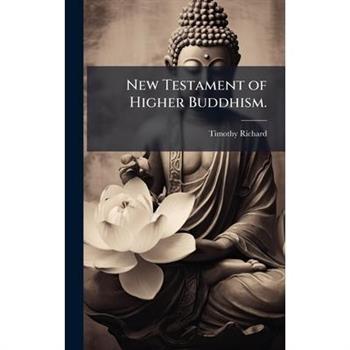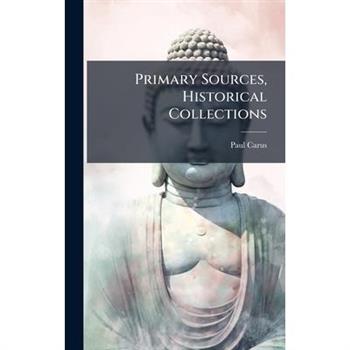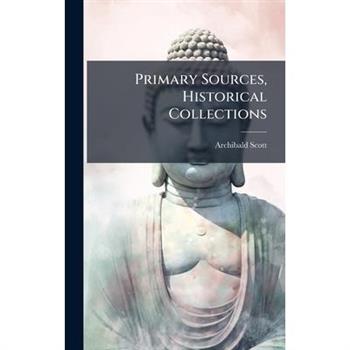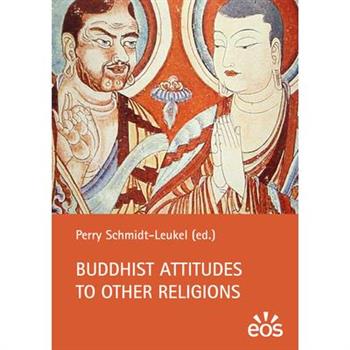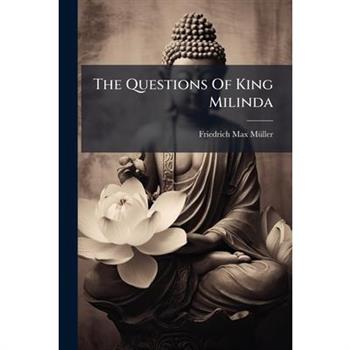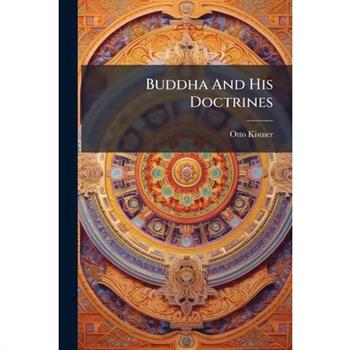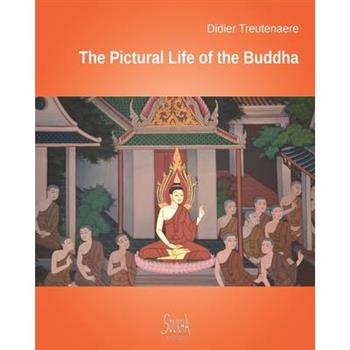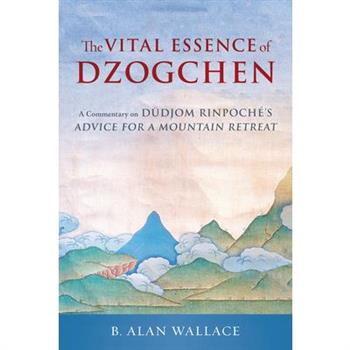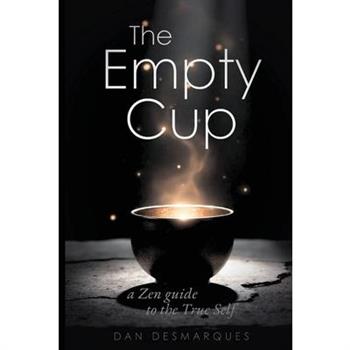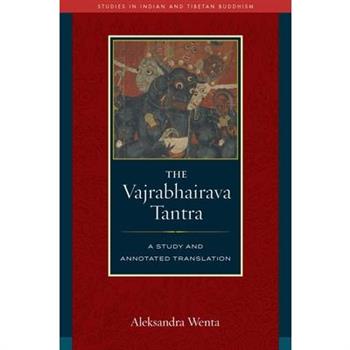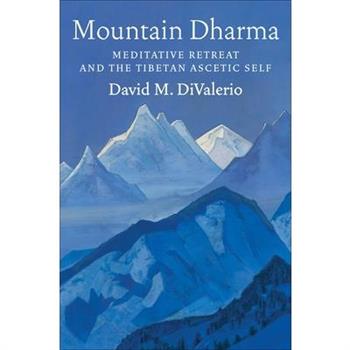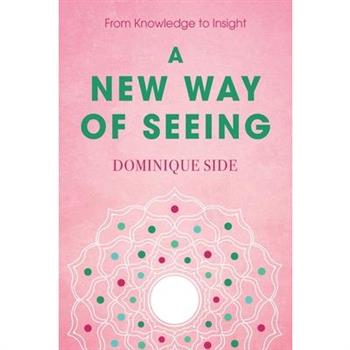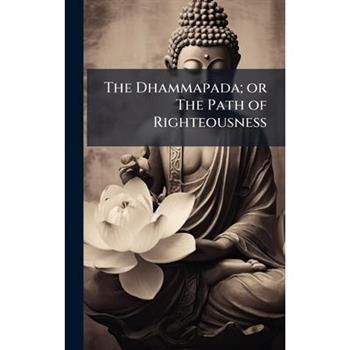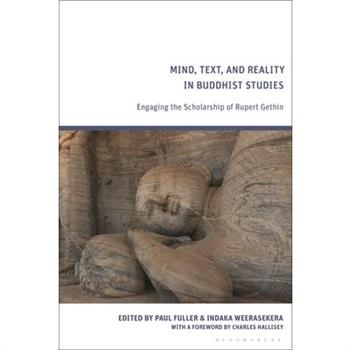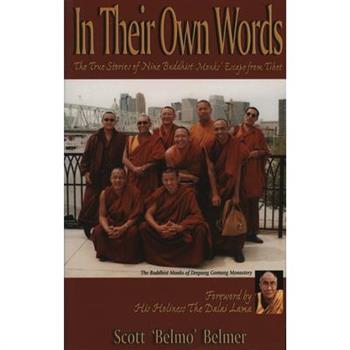Seeing the Bodies Within
An in-depth examination of the Samma Araham tradition, a distinctive Theravada Buddhist meditation system that emphasizes visualization, mantra, and the discovery of the spiritual bodies within us. Discovered in a vision by the monk Luang Pho Sot Candasaro in 1916, Samma Araham is a thriving meditation tradition in its native Thailand, but little understood in the West. In this fascinating overview, Jak Cholvijarn weaves together Candasaro's life story, the historical context that shaped his influential teachings, and the enduring legacy of the Samma Araham meditation system that he established. Drawing on Candasaro's own writings and sermons, Cholvijarn presents the entire Samma Araham meditation system in all its intricate detail, demonstrating how the practice incorporates elements of both canonical Buddhist texts like the Satipatthana Sutta, as well as the regional boran kammatthana or "old meditation" practices that once thrived in Southeast Asia. Detailed descriptions of the meditative journey into a series of eighteen "inner bodies," each corresponding to different levels of Buddhist teaching reveal a colorful, mystical side of the Theravada tradition that has gone underappreciated in the age of mindfulness and insight meditation.
The Myth of Freedom and the Way of Meditation
Freedom is generally thought of as the ability to achieve goals and satisfy desires. But what are the sources of these goals and desires? If they arise from ignorance, habitual patterns, and negative emotions, is the freedom to pursue these goals true freedom--or is it just a myth? In this book, Ch繹gyam Trungpa explores the meaning of freedom in the profound context of Tibetan Buddhism. He shows how our attitudes, preconceptions, and even our spiritual practices can become chains that bind us to repetitive patterns of frustration and despair. He also explains how meditation can bring into focus the causes of frustration, and how these negative forces can aid us in advancing toward true freedom. Trungpa's unique ability to express the essence of Buddhist teachings in the language and imagery of contemporary American culture makes this book one of the best sources of the Buddhist doctrine ever written. This edition also contains a foreword by Pema Ch繹dr繹n, a close student of Ch繹gyam Trungpa and the best-selling author of When Things Fall Apart.
The Flowing River of Dharma
Discover succinct instructions for ending the habits that cause you so much suffering in this contemporary exploration of a foundational four-line teaching from Vajrayana Buddhism. How do we break free from the habits and compulsions that bring us suffering? In the twelfth century, Sakya Drakpa Gyeltsen penned four short but significant lines, known as Parting from the Four Attachments, offering a concise guide to becoming a genuine dharma practitioner and charting a path to enlightenment. In The Flowing River of Dharma, Anyen Rinpoche and Allison Choying Zangmo offer a fresh, contemporary exploration of this foundational Vajrayana Buddhist text, drawing on insights from Anyen Rinpoche's teacher Khenchen Tsara Dharmakirti Rinpoche and a cave-dwelling hermit known as Lama Tsepel. Using the rime approach, which promotes cross-tradition learning, the authors refer to teachings from a variety of traditions, in particular The Four Dharmas of Gampopa, as well as wisdom from the Sakya, Kagyu, Nyingma, Kadam of old, and Gelug traditions of Tibet. With clear language and a candid look at the challenges of dharma practice, Anyen Rinpoche explores the power of renunciation, understanding samsara's true nature, and cultivating bodhicitta as pathways to a meaningful life. Buddhists of all backgrounds will discover how these lojong (mind training) teachings can anchor us firmly on the path and ensure that we don't stray from it until we reach complete liberation.
The Guru Yoga of Je Tsongkhapa
Explore the guru yoga practice of Je Tsongkhapa with a legendary meditation master. The Hundreds of Deities of Tusita is an inspiring and well-loved guru yoga practice that originated from Je Tsongkhapa himself and was disseminated by the First Dalai Lama. In this book, Choden Rinpoche--a celebrated scholar who was chosen as a debate partner for His Holiness the Dalai Lama, as well as an accomplished yogi who spent nineteen years in solitary retreat--offers two different commentaries to guide the reader's understanding. Rinpoche's first commentary is based on the tantric oral tradition as presented by the great lama and scholar Pabongkha Dechen Nyingpo in his own inspired commentary on The Hundreds of Deities of Tusita, called A Treasury of Precious Jewels, which is presented here in full. Rinpoche adds clarifying instruction to Pabongkha Rinpoche's work, bringing out the deeper meaning of the text and revealing how ordinary practitioners may understand and apply the instructions. The second commentary from Rinpoche is a condensed commentary based on the sutra tradition. Thus, the reader is treated to two different perspectives of the guru yoga practice of Je Tsongkhapa. Previously published as Opening the Door of Blessings, this edition has been revised and updated, and is an essential addition to any practitioner's library.
The Other Buddhism
The Pureland schools are the largest Buddhist denominations in Japan, and yet this approach to Buddhism is hardly known in the West. Pureland centres on our relationship with Amida Buddha, the embodiment of measureless love, light and life. It offers a fresh view of spirituality, recognizing us in our mundane lives, whilst lifting us into relationship with the eternal. As ordinary people, we cannot fathom our own depths nor can we know the immensity of the universe. We can but stand in awe and reach out to what we intuitively know to be beyond the small orbit of our lives. Pureland is a path of simplicity and beauty, poetry and nature. It is the path of faith.
Melody and Silence
As we move towards a one world consciousness, we need an evolved spirituality to follow. We can have an adult, non-dogmatic spiritual life that transcends borders and language. This book is a mixture of talks on truth and recorded satsangs. It is an attempt to reveal, that, knowing oneself has nothing to do with spirituality or religion. Truth is discovering who you are. This enquiry has no conditions to it. It does not matter where you are from, what culture, language, religion. Who you are, is who you are! It is time to move forward in a culture of oneness. One world, one religion - truth seeking, one prayer - silence. ,
The Miracle of Mindfulness
"Thich Nhat Hanh's ideas for peace, if applied, would build a monument to ecumenism, to world brotherhood, to humanity." -- Dr. Martin Luther King Jr. An exclusive Beacon Classics edition of the book that brought mindfulness to the Western world and continues to open the hearts and minds of readers everywhere, with a gorgeous spot gloss cover and retro, classic palette The Miracle of Mindfulness has been cherished by generations of readers for its eloquent and useful introduction to the practice of meditation. Zen Master Thich Nhat Hanh offers gentle anecdotes and practical exercise as a means of learning the skills of mindfulness. From washing dishes to answering the phone to peeling an orange, he reminds us that each moment holds within it an opportunity to work toward greater self-understanding and peacefulness. Readers interested in an introduction to Buddhist thought, as well as those seeking to learn about mindfulness and stress reduction, continue to look to Thich Nhat Hanh's classic work for guidance and inspiration. This new edition features Thich Nhat Hanh's ever relevant reflections, for longtime readers and those new to the world of mindfulness alike. As the world we live in grows all the more overwhelming, The Miracle of Mindfulness remains a beloved antidote to the accelerated speed and intense expectations of our lives.
Amid the Ruins of the Silk Road
Amid the Ruins of the Silk Road: In Search of the Long-Lost Footprints of Śākyaputra Faxian is an insightful piece of original scholarship under the genre of intellectual and religious history. The volume attempts to shed new light upon the evolutionary phases of Chinese Buddhist monasticism, with special focus upon the state of Buddhist monastic disciplinary codes (vinaya) in premodern China by navigating through unexplored domains of cross-civilizational interactions, as has been intricately portrayed in the fascicles of Śākyaputra Faxian's most celebrated fifth century travel memoir, Fo Guo Ji. The book offers a critical inquiry into the chain of events which not only defined the final contours of Chinese Buddhist monastic tradition, but also proved to have been instrumental in shaping Chinese Buddhism into its region-specific Sinified mould. This seminal academic work, by drawing upon primary source documents from Buddhist and secular literature, brings to the fore, the significance of the historic trans-continental Silk Road as a crucial interface, having stood witness through the vicissitudes of time, to some of the most unprecedented of cultural, intellectual and philosophical borrowings across variegated socio-cultural spaces.
Queer Engaged Buddhism
This accessible book explores the relationship between queer and trans theories and Buddhist scriptures across traditions, to begin a queer and trans approach to socially engaged Buddhism.It blends the academic with the personal, providing meditations for queer and trans communities in each chapter.Kody Muncaster, a Buddhist scholar and practitioner, begins with an introduction to queer work on topics such as affect, trauma, and literary critique practices. They also provide an overview on queerness and Buddhism and examine what a Queer Studies reading of Buddhist histories from different traditions can contribute to uncovering hidden elements of queerness, with a strong focus on the often excluded narratives of intersex and trans folks.ABOUT THE AUTHORKody Muncaster, PhD, is an OCSWSSW Psychotherapist and Clinical Director of Pink Lotus Counselling & Psychotherapy, specializing in trauma therapy, mindfulness, gender, and sexuality. They are queer and non-binary. They have taught at the Buddhism, Psychology, and Mental Health program at the University of Toronto: New College as well as at Western University's Department of Gender, Sexuality, and Women's Studies. They began a three-year training to become a Zen priest under Venerable Bhikkhuni Th穩ch Nu Tinh Quang in 2024.CONTENTSIntroduction: Queer Studies and Engaged BuddhismTheoretical Frameworks for Queer Engaged BuddhismQueer and Trans Buddhist Histories: Towards a Queer Buddhist HermeneuticsNon-Binary Phenomenologies, Non-duality, and EmptinessTrans Bodhichitta: Trauma, Deity Yoga, and Gender EuphoriaTrans Bodhisattvas, Queer Practices: Kuan Yin, Tonglen, and HIV/AIDSBuddhist Psychotherapy and -Spiritual Care for Queer and Trans -CommunitiesPrecarious Love: On Interconnectedness for a Queer(ed) and Trans(formed) Engaged BuddhismReferences
The Direct Way
Join renowned spiritual teacher Adyashanti for a practice-based journey out of the thinking mind and into the awakened awareness beyond perceptual reality. For renowned teacher Adyashanti, every single moment contains a doorway into spiritual awakening. But what does it actually mean to "wake up" to the truth of reality? And what does it take to recognize these opportunities? In The Direct Way, Adya (as his students call him) offers a sequence of thirty practices intended to connect with and cultivate ever-greater awareness of the unseen dimensions of your being. From the simple expression of "I am," to an exploration of the Spiritual Heart, and all the way into the fundamental Ground of Being, these exercises emphasize that the process of awakening takes "many small glimpses, experienced many times." Adya concludes with practical pointers on how to integrate transcendent experiences into the everyday fabric of life--including your career, personal goals, and intimate relationships. Here you will discover: - How to dis-identify from conceptual, ego-based thinking- Perceiving the ego as a tool to navigate consciousness rather than an obstacle- The "knowing yet empty" quality of foundational awareness- The surprising route to realizing awareness of the Spiritual Heart- Feeling through the Spiritual Heart as a way to experience true interconnection- The meaning of the Zen teaching phrase, "This very body is the Buddha" - Exploring the exhilarating paradox of Being and Becoming- How to establish anchor points to stabilize your journey into the Ground of Being- What it means to live each day with "enlightened relativity"- How awakening puts control of your experience in your hands--but also the responsibility for it No one experiences awakening quite the same. With The Direct Way, join Adya to discover pathways toward an awareness as wide as the sky and as personal as your innermost heart.
Tibetan Magic
This book focuses on the theme of magic in Tibetan contexts, encompassing both pre-modern and modern text-cultures as well as contemporary practices. It offers a new understanding of the identity and role of magical specialists in both historical and contemporary contexts. Combining the theoretical approaches of anthropology, ethnography, religious and textual studies, the book aims to shed light on experiences, practices and practitioners that have been frequently marginalized by the normative mainstream monastic Buddhisttraditions and Western Buddhist scholarship, which focuses primarily on meditation andphilosophy. The book explores the intersection between magic/folk practices and Tantra, a complex, socio-religious phenomenon associated not only with the religious and political elites who sponsored it, but also with 'marginal' ethnic groups and social milieus, as well as with lay communities at large, who resorted to ritual agents to fulfil their worldly needs.
Speculative Orientalism
Examining the works of prominent New Wave science fiction authors from the 1950-1960s, Sang-Keun Yoo highlights the underexplored connection between American science fiction and Asian religions, such as Taoism, Buddhism, and Hinduism.The book considers how the major world wars of the 20th century-Second World War, the Cold War, and the Vietnam War- repositioned Asian culture in relation to the science fiction genre in the period. Underpinning this study, Sang-Keun Yoo argues that "Speculative Orientalism" emerged in American science fiction during the 1950s and 60s. This concept adopted various aspects of Asian religions to envision alternative worlds, unburdened by the constraints of colonialism, totalitarianism, racism, and sexism present in contemporary American society. Bringing fresh perspectives to the works of William S. Burroughs, Philip K. Dick, Ursula K. Le Guin and Samuel R. Delany, this book offers an insightful examination of the role of Asian religions in American science fiction and their impact on the genre's history.
The Buddha
From one of the world's leading Buddhist scholars, a deeply researched and unprecedented portrait of the Buddha Like Jesus and Muhammad, the Buddha is one of the most significant figures in history. But is he a historical figure? In this revelatory book, Donald S. Lopez Jr. explores this question and considers what is at stake in the answer. Using stories of the Buddha's life--drawn from the earliest biographies, the work of other scholars, and his own research--Lopez traces a single narrative from the Buddha's birth to his enlightenment to his passage into nirvana. Unlike those who transformed the Buddha into a rationalist philosopher, Lopez seeks to "remythologize" the Buddha, restoring the rainbow that encircled the Buddha for centuries, radiating his teachings around the world. Complementing traditional Buddhist sources with insights from Gustave Flaubert, Oscar Wilde, George Eliot, and others, Lopez produces a rich, accessible, and unprecedented portrait of one of the world's most important religious figures.
Samatha and Vipasyana
Invaluable instructions on core meditations designed to bring about irreversible spiritual transformation. For those who aspire to the total enlightenment of a buddha, the practices of samatha and vipasyana play a crucial role from the beginning of the path to its culmination. Designed to first free our minds from the five obscurations and eventually from the ignorance that is the root of suffering, these practices, when imbued with bodhicitta, enable us to reach a pivotal stage within the Mahayana path of accumulation, at which we're assured of being a bodhisattva in all our future lives until enlightenment. The instructions gathered here are like a string of pearls spanning from the eleventh century to the present day. They include teachings from great Indian masters as well as renowned lamas of the past and present from the four major orders of Tibetan Buddhism, many of them stemming from visionary teachings revealed by Manjusri, Vajrapani, Avalokitesvara, and Padmasambhava. Introductions rich with biographical detail accompany each group of translated entries, providing invaluable context and drawing connections for the reader. Original essays from Lama Alan Wallace cap off the anthology, and a collection of links to a rich array of recorded oral teachings by eminent lamas, including His Holiness the Dalai Lama's first teachings in the West, make this a true treasure trove for the practitioner and scholar alike.
NONVIOLENT STRUGGLE - The Foundation for Building Global Peace
REASONS FOR CHOOSING THE TOPIC OF NONVIOLENCE (AHIMSA): THE WORLD IN CRISIS OF WAR AND VIOLENCE (HIMSA)The current global context in mid-2024 (twenty-first century) is unfolding in an extremely complex manner, with many instability, contradictions, grievances, hatred, and increasing disagreements. This has escalated armed wars, and violent massacres (himsa), with serious escalations like the Russia-Ukraine conflict, Israel-Hamas, and the civil war in Yemen involving the Houthis, Myanmar, Pakistan, Afghanistan, Syria, and many other places.Lack of love, compassion, respect, and generosity leads to "the stacked fire of conflict and hatred" potentially spreading across entire regions. The world order is in jeopardy, with many painful consequences including a high number of innocent civilian casualties. According to Al Jazeera, in the Hamas-Israel conflict alone, there were at least 36,224 fatalities, including over 15,000 children, and more than 81,777 injuries.The United Nations and many countries worldwide are calling for an end to conflicts, promoting humanitarian efforts, peace solutions, and ceasefires, yet effectiveness has been limited.NONVIOLENCE IS THE KEY TO RESOLVING THE CRISIS OF VIOLENCEThe term "nonviolence" (ahimsa) signifies the virtue of "non-harming," advocating for the non-use of physical force and instead employing methods of peaceful negotiation (ahimsa) or gentle acts of compassion when interacting with all individuals, living beings, groups, communities, or nations worldwide. This is one of the prominent virtues in Indian religions such as Buddhism, Jainism, Hinduism, and in the modern era of the twentieth century, many political figures have also embraced this spirit of nonviolence in their struggles for independence or against social injustices, such as Mahatma Gandhi (1869-1948), Dr. Bhimrao Ramji Ambedkar (1891-1956), Bodhisattva Thich Quang Duc (1897-1963), Martin Luther King Jr. (1929-1968)In this article, I propose to discuss the teachings of the Buddha on nurturing the spirit of nonviolence and non-harming (ahimsa) based on compassion and wisdom. Additionally, I will explore the application of this nonviolent struggle spirit by King Aśoka (ancient times) and modern saints like Mahatma Gandhi, Dr. Bhimrao Ramji Ambedkar, Bodhisattva Thich Quang Duc, Martin Luther King Jr. in their effective efforts through dialogue and action to end conflicts, social injustices, religious oppression, and to restore peace to the community at large.(Introduction)
Five J?takas
Five J? takas presents a collection of moral tales drawn from Buddhist tradition. This volume includes a fairy tale, a comical story, and three fables, all presented in their original P? li text alongside an English translation and explanatory notes. These J? takas, or birth stories, offer insights into the previous lives of the Buddha and impart valuable lessons about virtue, wisdom, and compassion. The inclusion of the original P? li text makes this edition invaluable for scholars and students of Buddhism, while the accessible translation ensures that these timeless stories can be enjoyed by a wider audience. Explore the rich literary heritage of Buddhism through these engaging narratives, which offer a glimpse into the cultural and spiritual world of ancient India.This work has been selected by scholars as being culturally important, and is part of the knowledge base of civilization as we know it. This work was reproduced from the original artifact, and remains as true to the original work as possible. Therefore, you will see the original copyright references, library stamps (as most of these works have been housed in our most important libraries around the world), and other notations in the work.This work is in the public domain in the United States of America, and possibly other nations. Within the United States, you may freely copy and distribute this work, as no entity (individual or corporate) has a copyright on the body of the work.As a reproduction of a historical artifact, this work may contain missing or blurred pages, poor pictures, errant marks, etc. Scholars believe, and we concur, that this work is important enough to be preserved, reproduced, and made generally available to the public. We appreciate your support of the preservation process, and thank you for being an important part of keeping this knowledge alive and relevant.
Common and Uncommon Vajrayogini Sadhanas
These Vajrayogini Sadhana texts are arranged in Tibetan, phonetics, and English translation by Khenpo Migmar Tseten from original sources along with Chinese translation.. It is our hope that these pages offer a window into the awakened state and inspire you in your own practice. May all sentient beings everywhere experience peace. Important requirement: It is very important to receive the empowerment, transmission, and instruction from a Master who holds the Vajrayogini Naropa lineage to do these practices.
New Testament of Higher Buddhism.
"New Testament of Higher Buddhism" by Timothy Richard, published in 1910, explores the points of contact and potential synthesis between Buddhist and Christian teachings. Richard, a prominent missionary and scholar, seeks to bridge the gap between these two major world religions by highlighting shared ethical principles and philosophical concepts. This work offers a unique perspective on comparative religion and interfaith dialogue, making it a valuable resource for students of religious studies, Buddhist practitioners, and anyone interested in exploring the common ground between diverse spiritual traditions. The book remains relevant for its historical insights and its enduring call for understanding and harmony among different faiths.This work has been selected by scholars as being culturally important, and is part of the knowledge base of civilization as we know it. This work was reproduced from the original artifact, and remains as true to the original work as possible. Therefore, you will see the original copyright references, library stamps (as most of these works have been housed in our most important libraries around the world), and other notations in the work.This work is in the public domain in the United States of America, and possibly other nations. Within the United States, you may freely copy and distribute this work, as no entity (individual or corporate) has a copyright on the body of the work.As a reproduction of a historical artifact, this work may contain missing or blurred pages, poor pictures, errant marks, etc. Scholars believe, and we concur, that this work is important enough to be preserved, reproduced, and made generally available to the public. We appreciate your support of the preservation process, and thank you for being an important part of keeping this knowledge alive and relevant.
The World Exists to Set Us Free
Down-to-earth wisdom on how to live a life of authenticity and spiritual integrity, from one of the West's most respected teachers of vipassana meditation. How does dharma wisdom show up in our lives every day? This collection of teachings by the beloved Insight Meditation teacher Larry Rosenberg offers clear, down-to-earth guidance on learning how to live a life informed by Buddhism--through questioning, reflective observation, and self-understanding. Rosenberg is known for presenting the essence of the Buddhism in a way that is unvarnished, utterly accessible, and that resonates with a wide audience. Here he unpacks--with his signature engaging and iconoclastic style--such topics as meditation, silence, use of the breath, self-knowing, working with strong emotions, intimacy, illness and grief, among others. There are few teachers who so epitomize the idea of "spiritual friend" in the way that Larry Rosenberg does. His teachings give a clear sense that dharma is very much a part of everyday life. This book is also informed by what Rosenberg considers his deeper and more immediate understanding of dharma that has come in recent years--a period marked in his own life by illness and disability--and in the life of the planet by a deadly pandemic, war, an existential climate crisis, and pervasive technological distraction. An introductory essay, written by journalist and author Madeline Drexler, serves as a spiritual biography of Rosenberg, presenting his reflections on more than half a century of dedicated dharma practice and instruction. This essay illuminates what, for Rosenberg, were profound turning points and moments of realization--his long apprenticeships with foundational figures in twentieth-century Buddhism, including Ajahn Chah, Thich Nhat Hanh, Seung Sahn, and Ajahn Buddhadasa, as well as Indian philosopher Jiddu Krishnamurti.
Coaching The Invisible
"Sandhya offers a beautiful gift for all coaches. If you are hoping to make a life-changing difference for people in your coaching, leading and personal conversations, take time to savor 'Coaching the Invisible'."- Marcia Reynolds, PsyD, MCC, and world-renowned coach and author of 'Coach the Person, Not the Problem' "'Coaching the Invisible' is a luminous guide that transforms how we understand the human heart of change. By weaving together neuroscience, emotional intelligence and spiritual insights, Sandhya's masterpiece unveils the hidden currents that shape behavior and spark lasting transformation.This is an essential read for coaches, managers, and change-makers who yearn to transcend surface-level solutions and create transformational shifts."- Jean-Francois Cousin, former Chairman, ICF Global Board; global executive and team coach "'Coaching the Invisible' invites us to expand the boundaries of what coaching can be. This book is more than a guide - it's a challenge to the reader to go beyond models and methods to listen more deeply, feel more fully, and coach with a reverence for the whole person."- Jayne Morrison, Regional Network Director, Six Seconds MEAI The Hidden Forces Behind Truly Transformational Coaching Most coaching focuses on tools, tactics, and surface-level strategies. But the most powerful shifts? They happen at a deeper level-where emotional intelligence, spiritual mastery, and neuroscience intersect. This book unlocks the missing link in coaching: how to harness emotion, intuition, and inner alignment to create breakthroughs that stick. Drawing from neuroscience, mindfulness, and years of experience training 1,000+ coaches worldwide, Sandhya reveals the small, unseen shifts that separate good coaches from extraordinary ones. Inside, you'll discover: ✅ Why emotional and spiritual intelligence drive real-world results more than mindset alone✅ The neuroscience behind trust, intuition, and deep transformation in coaching✅ How to identify and dissolve hidden emotional barriers that block progress✅ Practical, science-backed strategies to turn insight into action for your clients✅ A powerful framework to make every coaching session more intuitive, effective, and lasting This book is for coaches, mentors, and leaders who want to go beyond techniques and tap into the true power of transformation. If you're ready to unlock the full potential of your coaching, this book will show you how.
Primary Sources, Historical Collections
Explore the historical interactions between Buddhism and Christianity in "Primary Sources, Historical Collections: Buddhism and Its Christian Critics," featuring a foreword by T. S. Wentworth. This volume, authored by Paul Carus, delves into primary source materials to examine the critiques and comparisons made between these two major world religions. Carus, a key figure in introducing Eastern thought to the West, provides valuable insights into the theological and philosophical discussions that shaped early perceptions of Buddhism within Christian contexts. This book offers a unique perspective on the historical dialogue, making it an essential resource for scholars and anyone interested in comparative religion and the history of religious thought.This work has been selected by scholars as being culturally important, and is part of the knowledge base of civilization as we know it. This work was reproduced from the original artifact, and remains as true to the original work as possible. Therefore, you will see the original copyright references, library stamps (as most of these works have been housed in our most important libraries around the world), and other notations in the work.This work is in the public domain in the United States of America, and possibly other nations. Within the United States, you may freely copy and distribute this work, as no entity (individual or corporate) has a copyright on the body of the work.As a reproduction of a historical artifact, this work may contain missing or blurred pages, poor pictures, errant marks, etc. Scholars believe, and we concur, that this work is important enough to be preserved, reproduced, and made generally available to the public. We appreciate your support of the preservation process, and thank you for being an important part of keeping this knowledge alive and relevant.
Primary Sources, Historical Collections
In "Buddhism and Christianity, A Parallel and a Contrast," Archibald Scott offers a detailed examination of the similarities and differences between two of the world's major religions. This comparative study, enhanced with a foreword by T. S. Wentworth, delves into the core tenets, historical developments, and philosophical underpinnings of Buddhism and Christianity. Scott explores areas of convergence and divergence, providing readers with a nuanced understanding of each faith's unique characteristics. This work is a valuable resource for students of religious studies, comparative religion, and anyone interested in exploring the complex relationship between these two influential spiritual traditions. Scott's insightful analysis promotes a deeper appreciation for the diversity of religious thought and the shared human quest for meaning and understanding.This work has been selected by scholars as being culturally important, and is part of the knowledge base of civilization as we know it. This work was reproduced from the original artifact, and remains as true to the original work as possible. Therefore, you will see the original copyright references, library stamps (as most of these works have been housed in our most important libraries around the world), and other notations in the work.This work is in the public domain in the United States of America, and possibly other nations. Within the United States, you may freely copy and distribute this work, as no entity (individual or corporate) has a copyright on the body of the work.As a reproduction of a historical artifact, this work may contain missing or blurred pages, poor pictures, errant marks, etc. Scholars believe, and we concur, that this work is important enough to be preserved, reproduced, and made generally available to the public. We appreciate your support of the preservation process, and thank you for being an important part of keeping this knowledge alive and relevant.
Buddhist Attitudes to Other Religions
In a world in which the religious 'other' has been both globalized and localized, we are tending towards a situation in which all religious traditions are aware of all others and to this extent are in some kind of communication with one another. Even if the relationship is one of proselytism, rejection, conflict or enmity, it is still a relationship, and this involves a reaction to or interaction with the other. Many adherents of one faith have now practical dealings with people of other religions, thus inevitably facing questions of meaning and belonging. Buddhists are no exception to this, even if Buddhism manifests both, a distinctive selfsufficiency and an ability to tolerate difference. Does the Buddhist tradition provide any resources for going beyond the traditional exclusivistic and inclusivistic options? Can there be something like a Buddhist pluralism, that is, the recognition of another religious path as being different but nevertheless equally liberative, equally salvific? Whether Buddhist pluralism is a genuine option is something that the contemporary inner-Buddhist debate has to figure out. But it is far from evident that Buddhism is a sort of naturally pluralistic religion. As far as its traditional discourse is concerned it seems to have been, by and large, as exclusivistic or inclusivistic in its soteriological claims as any other of the major religious traditions.
The Questions Of King Milinda
The Questions of King Milinda is a crucial text in the Buddhist tradition, presenting a dialogue between King Milinda (Menander I), an Indo-Greek ruler, and the Buddhist sage Nagasena. This work, likely composed between 100 BCE and 200 CE, explores complex doctrines of Buddhism through a series of insightful questions and answers. Nagasena skillfully elucidates concepts such as karma, rebirth, the nature of self, and the path to enlightenment. The text is celebrated for its clear and engaging style, making abstract philosophical ideas accessible to a wider audience. "The Questions of King Milinda" offers profound insights into early Buddhist thought and its interaction with Hellenistic culture, providing invaluable perspectives for students of philosophy, religion, and history. This edition ensures the enduring value of this timeless spiritual and intellectual classic.This work has been selected by scholars as being culturally important, and is part of the knowledge base of civilization as we know it. This work was reproduced from the original artifact, and remains as true to the original work as possible. Therefore, you will see the original copyright references, library stamps (as most of these works have been housed in our most important libraries around the world), and other notations in the work.This work is in the public domain in the United States of America, and possibly other nations. Within the United States, you may freely copy and distribute this work, as no entity (individual or corporate) has a copyright on the body of the work.As a reproduction of a historical artifact, this work may contain missing or blurred pages, poor pictures, errant marks, etc. Scholars believe, and we concur, that this work is important enough to be preserved, reproduced, and made generally available to the public. We appreciate your support of the preservation process, and thank you for being an important part of keeping this knowledge alive and relevant.
The Questions Of King Milinda
The Questions of King Milinda is a crucial text in the Buddhist tradition, presenting a dialogue between King Milinda (Menander I), an Indo-Greek ruler, and the Buddhist sage Nagasena. This work, likely composed between 100 BCE and 200 CE, explores complex doctrines of Buddhism through a series of insightful questions and answers. Nagasena skillfully elucidates concepts such as karma, rebirth, the nature of self, and the path to enlightenment. The text is celebrated for its clear and engaging style, making abstract philosophical ideas accessible to a wider audience. "The Questions of King Milinda" offers profound insights into early Buddhist thought and its interaction with Hellenistic culture, providing invaluable perspectives for students of philosophy, religion, and history. This edition ensures the enduring value of this timeless spiritual and intellectual classic.This work has been selected by scholars as being culturally important, and is part of the knowledge base of civilization as we know it. This work was reproduced from the original artifact, and remains as true to the original work as possible. Therefore, you will see the original copyright references, library stamps (as most of these works have been housed in our most important libraries around the world), and other notations in the work.This work is in the public domain in the United States of America, and possibly other nations. Within the United States, you may freely copy and distribute this work, as no entity (individual or corporate) has a copyright on the body of the work.As a reproduction of a historical artifact, this work may contain missing or blurred pages, poor pictures, errant marks, etc. Scholars believe, and we concur, that this work is important enough to be preserved, reproduced, and made generally available to the public. We appreciate your support of the preservation process, and thank you for being an important part of keeping this knowledge alive and relevant.
Buddha And His Doctrines
"Buddha And His Doctrines" offers a comprehensive exploration of the life, teachings, and philosophical foundations of Buddhism. This work provides a detailed examination of the core doctrines attributed to Buddha, tracing their historical development and significance within the broader religious landscape. Readers will gain insights into the key concepts of Buddhist thought and their practical applications. This accessible study serves as an invaluable resource for anyone seeking a deeper understanding of Buddhism's enduring influence on spiritual and philosophical traditions.This work has been selected by scholars as being culturally important, and is part of the knowledge base of civilization as we know it. This work was reproduced from the original artifact, and remains as true to the original work as possible. Therefore, you will see the original copyright references, library stamps (as most of these works have been housed in our most important libraries around the world), and other notations in the work.This work is in the public domain in the United States of America, and possibly other nations. Within the United States, you may freely copy and distribute this work, as no entity (individual or corporate) has a copyright on the body of the work.As a reproduction of a historical artifact, this work may contain missing or blurred pages, poor pictures, errant marks, etc. Scholars believe, and we concur, that this work is important enough to be preserved, reproduced, and made generally available to the public. We appreciate your support of the preservation process, and thank you for being an important part of keeping this knowledge alive and relevant.
The Pictural Life of the Buddha
The Pictural Life of the Buddha The life of the Buddha is frequently depicted on the walls of temples in Thailand.For centuries, the primary purpose of these murals, which depict episodes strongly tinged with legend, has been to nurture the religious and moral education of the Buddhist faithful. For the last two centuries, their secondary purpose has been to rival Christian hagiography.This book analyses the main episodes in the murals, explaining their details and giving their doctrinal or legendary context.Despite their differences in quality, from the most naive to the most refined, there is a close similarity between the murals from one temple to the next, in terms of both staging and detail. And these similarities are not confined to the temples of Thailand; they extend to monasteries in all other regions where the Theravāda tradition has flourished: Myanmar, Cambodia, Laos, Sri Lanka, the Chittagong Hill Tracts of Bangladesh and the north of the Mekong delta in Vietnam. By the author of: ◆ 100 questions on Theravāda Buddhism◆ Buddhism and Re-births◆ The Legend of Gotama◆ Rohingyas, from legend to reality Didier Treutenaere holds a degree in philosophy from the Universit矇 Paris-SorbonneSpecialist in Buddhist texts in the Pali languageAuthor of books and articles on the Theravāda tradition
The Empty Cup
What lies beneath your name, roles, and possessions? The Empty Cup: A Zen Guide to the True Self, invites you on a transformative journey. It helps you let go of illusions and discover your true, radiant self. Grounded in Zen wisdom and filled with personal stories of challenges and growth, it offers practical guidance for finding freedom in today's busy world. You'll learn how to release fear, heal from suffering, and live each moment with clarity and purpose. Instead of escaping life, the book encourages you to embrace it fully. It helps you uncover the divine spark within, connecting you to love, truth, and creativity. The Empty Cup will guide you in letting go of societal masks and finding inner peace amid life's chaos. If you want to break free from old patterns, find joy in the present moment, or connect with a higher purpose, this book will show you the way to your true self. Open the book and discover the courage to empty your cup and fill it with the light of your true destiny.
The Vajrabhairava Tantra
A groundbreaking work on the little-studied Indian origins of an influential tantric Buddhist practice along with a fresh English translation. The deity Vajrabhairava, or Yamantaka, is well known as the central figure of tantric practice in multiple lineages of Tibetan Buddhism and is also found in Chinese and Japanese Buddhism. Less is known about its foundational Indian context. The Vajrabhairava Tantra, dedicated to the Buffalo-headed deity Vajrabhairava, arose around the eighth century and had a considerable impact on the formation of religious praxis in the medieval Indian Buddhist world. This book contains a translation of the Vajrabhairava Tantra from the recently discovered Sanskrit text and a comprehensive study of its elements, of its origins and Indian commentators, and of the history of its transmission to Tibet. The annotation to the translation excerpts all six Indian commentaries on the tantra found in the Tibetan canon. One highly innovative contribution this work makes to the fields of tantric Buddhist studies and, more generally, to South Asian religions is the way it breaks down traditional disciplinary boundaries between tantra and magic. It shows that the genesis of tantric traditions cannot be reduced to a one-way influence of Hindu Shaivism on Buddhism or vice versa, but indicates a widespread "culture of magic," a common "ritual syntax," that crossed sectarian, linguistic, and socio-cultural boundaries, one that came to be significantly diminished in later Shaiva and Buddhist tantras. The study comprises the first half of the book, and the second half is the translation, which explains the construction of the mandala, the magical applications of the practice, the extraction of the mantra, the visualization, and the preparation of the pata painting and the homa fire ritual. A dozen color plates illustrate Vajrabhairava in his Solitary Hero and other forms along with mandalas of five different lineages, keys for which are provided in the appendix. Not only is the English translation of the Vajrabhairava Tantra the first to be based on a Sanskrit manuscript, but also the comprehensive study of all six canonical commentaries is the first to investigate the key commentaries by Akshobhya and Krishnacharya.
Mountain Dharma
An emphasis on practicing meditation in yearslong retreats--whether in a cave or a cloister, alone or with a small number of peers--has been a defining feature of Tibetan Buddhism throughout its entire history. Although the life stories and writings of the Himalaya's most famous hermits are well known, the history of this tradition and the details of its practice have largely remained a mystery. A groundbreaking exploration of individual long-term meditative retreat in Tibetan Buddhism, Mountain Dharma tracks developments in ascetic discourse and practice from the twelfth century to the twentieth. David M. DiValerio provides a comprehensive reading of texts that offer instruction on the eremitic endeavor, comparing how dozens of authors have treated six key orienting concerns: place, people, food, sources of danger, the spiritual lineage, and time. The book traces a genealogy of the Tibetan ascetic self, demonstrating an increasing tendency to adopt practices that contrast the meditator with earlier generations of enlightened masters, defining the latter-day retreatant as a being in time. By viewing instructions for how to live in retreat as technologies of self, this book sheds new light on how the history of this tradition has been driven by evolving notions of personhood. Methodologically innovative and richly sourced, Mountain Dharma sets a new standard for the historical study of asceticism.
Mountain Dharma
An emphasis on practicing meditation in yearslong retreats--whether in a cave or a cloister, alone or with a small number of peers--has been a defining feature of Tibetan Buddhism throughout its entire history. Although the life stories and writings of the Himalaya's most famous hermits are well known, the history of this tradition and the details of its practice have largely remained a mystery. A groundbreaking exploration of individual long-term meditative retreat in Tibetan Buddhism, Mountain Dharma tracks developments in ascetic discourse and practice from the twelfth century to the twentieth. David M. DiValerio provides a comprehensive reading of texts that offer instruction on the eremitic endeavor, comparing how dozens of authors have treated six key orienting concerns: place, people, food, sources of danger, the spiritual lineage, and time. The book traces a genealogy of the Tibetan ascetic self, demonstrating an increasing tendency to adopt practices that contrast the meditator with earlier generations of enlightened masters, defining the latter-day retreatant as a being in time. By viewing instructions for how to live in retreat as technologies of self, this book sheds new light on how the history of this tradition has been driven by evolving notions of personhood. Methodologically innovative and richly sourced, Mountain Dharma sets a new standard for the historical study of asceticism.
A New Way of Seeing
Hundreds of thousands of Westerners now meditate regularly but is our meditation doing the trick? Does it help us in times of need? A New Way of Seeing challenges us to go deeper, so Buddhism can benefit our lives.This book explores the unconscious biases that prevent us from fully hearing the meaning of the teachings, and invites readers to engage in the dynamic process of questioning what the Buddha said, allowing us to re-evaluate our own thinking and come to a new clarity.A New Way of Seeing is a compelling exploration of the Treasury of Metaphysics (Abhidharma Kosha) that breathes new life into a subject often perceived as dry and remote. Dominique Side skilfully offers a refreshing and engaging perspective that serves as a captivating gateway into the profound world of Buddhist thought and practice. With a wealth of traditional teachings and contemplative guidance received from esteemed Tibetan masters, Dominique masterfully weaves a contemporary narrative around Buddhist metaphysics. Her work is not only rich in reflection and inquiry but also invites readers to embark on a transformative journey toward deeper spiritual understanding and development. - Ven. Sean Price, Director of Tibetan Publications, Tsadra Foundation
A Drop from the Marvelous Ocean of History
A comprehensive study of the Lelung Jedrung lineage written by the current reincarnation of Lelung Jedrung. Using varied Tibetan resources and biographies, Rinpoche begins with the source of the reincarnations, Olkha Jedrung, who was the first manifestation of the Buddhist deity Vajrapani. From the origin, he moves through time until the 1990s, tracing the life of each Lelung reincarnation.
The Dhammapada; or The Path of Righteousness
"The Dhammapada; or The Path of Righteousness" is a revered collection of verses offering profound insights into Buddhist teachings. Attributed to anonymous authorship and dating back centuries, this work encapsulates the core principles of Buddhist ethics and philosophy. Each verse provides guidance on living a virtuous life, cultivating mindfulness, and attaining enlightenment.As a cornerstone of Buddhist literature, the Dhammapada continues to inspire readers seeking wisdom and inner peace. Its timeless lessons on morality, self-discipline, and spiritual growth resonate across cultures and generations. This edition makes accessible the enduring wisdom contained within its ancient pages.This work has been selected by scholars as being culturally important, and is part of the knowledge base of civilization as we know it. This work was reproduced from the original artifact, and remains as true to the original work as possible. Therefore, you will see the original copyright references, library stamps (as most of these works have been housed in our most important libraries around the world), and other notations in the work.This work is in the public domain in the United States of America, and possibly other nations. Within the United States, you may freely copy and distribute this work, as no entity (individual or corporate) has a copyright on the body of the work.As a reproduction of a historical artifact, this work may contain missing or blurred pages, poor pictures, errant marks, etc. Scholars believe, and we concur, that this work is important enough to be preserved, reproduced, and made generally available to the public. We appreciate your support of the preservation process, and thank you for being an important part of keeping this knowledge alive and relevant.
Mind, Text, and Reality in Buddhist Studies
Bringing together contributions from North America, UK, Europe and Asia into a single volume, this book advances scholarship in Buddhist studies and celebrates Rupert Gethin's immense contribution to the field. Essays include explorations of Buddhist teachings, scriptural studies and cover the fields of research that engage Rupert Gethin's scholarship: Buddhist cosmology, textual translations, Abhidharma and the interface between Buddhism and modern science. Scholars address themes associated with Buddhist thought and practice, including philosophy of mind and the relationship between artificial intelligence and Buddhist ethics. Translations and analyses of a variety of written materials span several genres and ages: Gandhari manuscripts, Vinaya commentaries, Buddhist Sanskrit imagery and Tibetan translations of late Indian texts. To acknowledge Rupert Gethin's important and expansive contribution to the field of Abhidharma, the book offers explorations into Abhidharma terminology, its commentaries and texts associated with early Buddhist schools. The volume also highlights the intricacies of Abhidharma, the interplay of Buddhism and modern technology, and how language shared between Pali and Sanskrit illuminates Buddhist doctrines.
Tibetan Sky-Gazing Meditation and the Pre-History of Great Perfection Buddhism
Through a rigorous analysis of original scriptures and later commentaries, this open access book unearths a cornucopia of idiosyncratic motifs pervading the famous Tibetan sky-gazing meditation known as "Skullward Leap" (thod rgal). Flavio Geisshuesler argues that these motifs suggest that the practice did not originate in the context of Buddhism, but rather within indigenous Tibetan culture and in close contact with the early B繹n tradition. The book argues that Dzogchen once belonged to a cult centered on the quest for vitality, which involved the worship of the sky as primordial source of life and endorsed the hunting of animals, as they were believed to be endowed with the ability to move in between the divine realm of the heavens and the world of humans. The book also traces the historical development of the Great Perfection, delineating a complex process of buddhicization that started with the introduction of Buddhism in the 7th century, intensified with the rise of new schools in the 11th century, and reached its climax in the systematization of the teachings by the great scholar-yogi Longchenpa in the 14th century. The study advances an innovative model of meditation as an open-ended practice that animates practitioners to face the most challenging moments of their lives with courage and curiosity, imagination and creativity, and playfulness and excitement; qualities that are oftentimes overlooked in contemporary descriptions of contemplation. The ebook editions of this book are available open access under a CC BY-NC-ND 4.0 licence on bloomsburycollections.com. Open access was funded by the Swiss National Science Foundation.
In Their Own Words
This collection of first hand accounts in which a group of young monks describe the fears and frustrations that continue to drive people to leave Tibet, brave the Himalayan passes and seek their fortunes in an unknown land is especially valuable. I hope that readers of In Their Own Words will not only be moved by these individuals' stories, but will also be persuaded of the justice of the Tibetan cause and will be inclined to give it their support. ---The Dalai Lama (from the Foreword)




